Category:
Resource Type:
Language:
The Role of Health Systems and Policy in Producing Behavior and Social Change to Enhance Child Survival and Development in Low- and Middle-Income Countries: An Examination of the Evidence
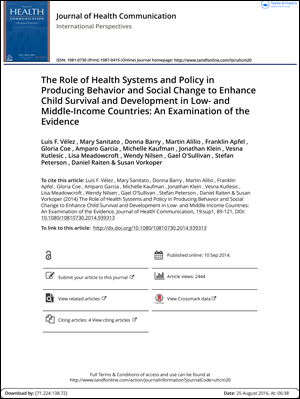
This review provides conclusions and recommendations on the studies of evidence-based behavior change interventions that addressed health systems or policy. The author’s recommendations are offered around each topic area (pneumonia/diarrhea, neonatal survival, nutrition, PMTCT, malaria, healthy pregnancies, and immunizations) that is classified by the World Health Organization Health System Building Blocks of health system delivery, health workforce and health financing, leadership and governance.
Community Engagement to Enhance Child Survival and Early Development in Low- and Middle-Income Countries: An Evidence Review

An evidence review team was organized to address the question, ‘‘What are the effective means to facilitate and empower communities to organize and advocate for interventions to achieve behavioral and social changes that are needed to accelerate reductions in under-5 mortality and optimize healthy and protective child development to age 5?’’ This article is a report from the evidence review team.
Demand Generation for 13 Life-Saving Commodities: A Synthesis of the Evidence

This report reviews, assesses and synthesizes the current evidence of social and behavioral drivers of demand generation for the 13 commodities, as well as effective practices in implementing demand generation programs. This review aims to provide a foundation for future evidence-based demand generation programming and activities, with a focus on helping others to better understand […]
Spotlight on Antenatal Corticosteroids for Preterm Respiratory Distress Syndrome

Studies have found that the antenatal corticosteroid (ACS) injection for women at risk of preterm delivery is the most effective intervention to reduce the risk of Respiratory Distress Syndrome (RDS) for preterm babies.
Spotlight on Chlorhexidine for Umbilical Cord Care
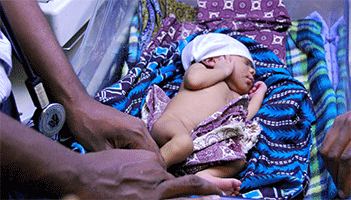
Chlorhexidine is a low-cost antiseptic effective against major agents of neonatal infection. However, it remains underutilized, and as such, has been identified by the UN Commission on Life-Saving Commodities for Women’s and Children’s Health as one of 13 commodities that if more widely accessed and properly used, could save the lives of more than six million women and children worldwide.
Spotlight on the Emergency Contraceptive Pill
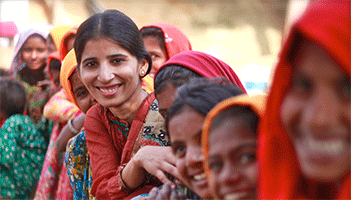
This fact sheet is part of a series on Demand Generation for 13 Life-Saving Commodities: A Synthesis of the Evidence. The emergency contraceptive pill (ECP) offers women a last chance at preventing an unplanned pregnancy after sexual assault, contraceptive failure or other instances of unprotected intercourse. However, ECPs remain an underutilized commodity in family planning.
Spotlight on Magnesium Sulfate for Pre-eclampsia and Eclampsia

The second leading cause of maternal death worldwide is pre-eclampsia and eclampsia (PE/E). It’s most often detected through the elevation of blood pressure during pregnancy, which can lead to seizures, kidney and liver damage, and death, if untreated. The risk that a woman in a developing country will die of PE/E is approximately 300 times higher than that for a woman in a developed country. Magnesium sulfate (MgSO4) is the most effective medication for the prevention and treatment of PE/E, yet remains underutilized.
Spotlight on Injectable Antibiotics for Neonatal Sepsis

This fact sheet is part of a series on Demand Generation for 13 Life-Saving Commodities: A Synthesis of the Evidence. The World Health Organization (WHO) lists four injectable antibiotics for the treatment of neonatal sepsis on the Essential medicines list for children.
Spotlight on Oxytocin and Misoprostol for Postpartum Hemorrhage
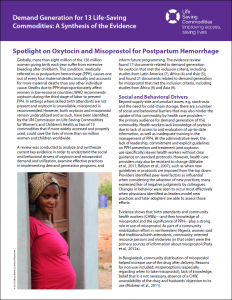
This fact sheet is part of a series on Demand Generation for 13 Life-Saving Commodities: A Synthesis of the Evidence. Oxytocin and misoprostol remain underutilized in the prevention of postpartum hemorrhage (PPH), and as such, have been identified by the UN Commission on Life-Saving Commodities for Women’s and Children’s Health as two of 13 commodities that if more […]
Spotlight on ORS/Zinc and Amoxicillin for Diarrhea and Pneumonia

This fact sheet is part of a series on Demand Generation for 13 Life-Saving Commodities: A Synthesis of the Evidence. World Health Organization recommended treatments for diarrhea and pneumonia—Oral Rehydration Salts (ORS), zinc and amoxicillin— are highly effective and affordable. However, they remain underutilized and as such, have been identified by the UN Commission on […]
Spotlight on Contraceptive Implants
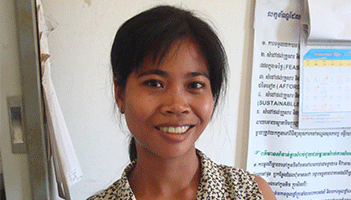
This fact sheet is part of a series on Demand Generation for 13 Life-Saving Commodities: A Synthesis of the Evidence. Contraceptive implants are safe, highly effective and long-acting progestin-only contraceptives that require little attention after insertion and prevent pregnancy for an extended period.
Spotlight on Neonatal Resuscitation for Birth Asphyxia
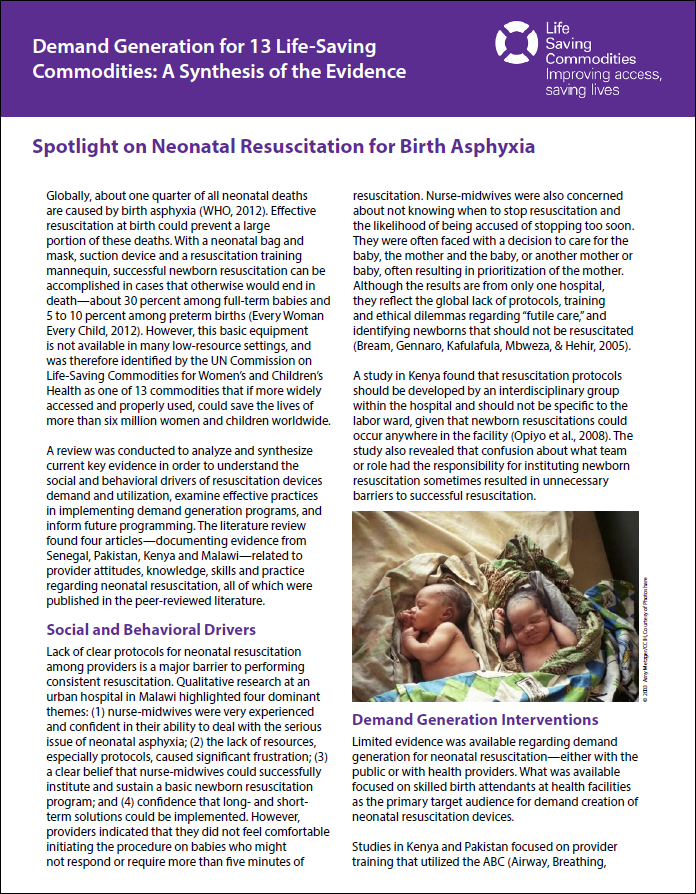
This fact sheet is part of a series on Demand Generation for 13 Life-Saving Commodities: A Synthesis of the Evidence. Basic resuscitation equipment is not available in many low-resource settings, and was therefore identified by the UN Commission on Life-Saving Commodities for Women’s and Children’s Health as one of 13 commodities that if more widely accessed and properly used, could save the lives of more than six million women and children worldwide.
Spotlight on the Female Condom
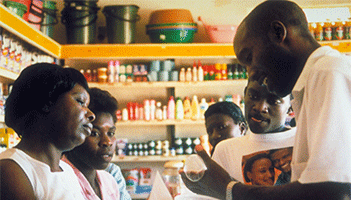
This fact sheet is part of a series on Demand Generation for 13 Life-Saving Commodities: A Synthesis of the Evidence. The female condom (FC) is the only women-initiated, dual-protection commodity that protects women from both STIs—including HIV—and unintended pregnancy. However, the FC remains an underutilized commodity in family planning and HIV prevention, and as such, has been identified by the UN Commission […]
Demonstrating Child Survival Successes at the Community Level

This research brief looks at the evidence supporting community-based approaches in child survival interventions. Demonstrating Child Survival Successes at the Community Level
Interpersonal Communication Can Work in Child Survival Programs

A research brief describing the effectiveness of interpersonal communication approaches in child survival programs. Interpersonal Communication Can Work in Child Survival Programs
The Value of Holistic-Integrated SBCC Approaches in Child Survival

This research brief focuses on holistic approaches that look to achieve an integrated intervention covering and crossing a wide range of areas/interventions in public health. The Value of Holistic-Integrated SBCC Approaches in Child Survival
Scaling Up Child Survival Programs with Mass Media and Technology
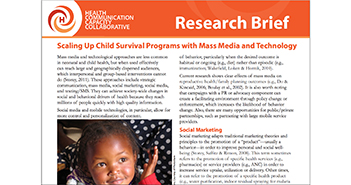
Mass media and technological approaches are less common in neonatal and child health, but when used effectively can reach large and geographically dispersed audiences, which interpersonal and group-based interventions cannot do. Scaling Up Child Survival Programs with Mass Media and Technology (PDF)

